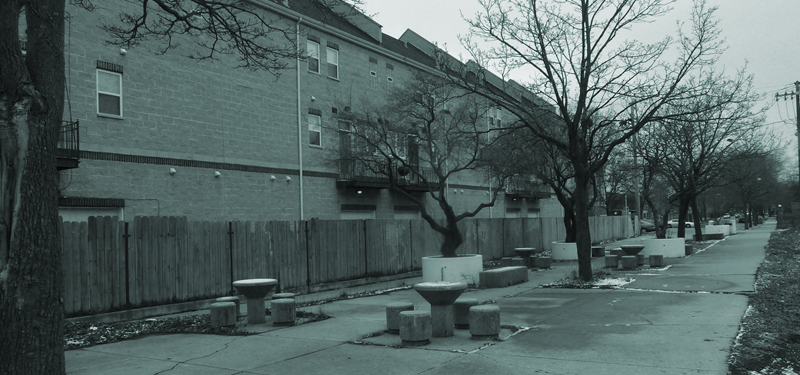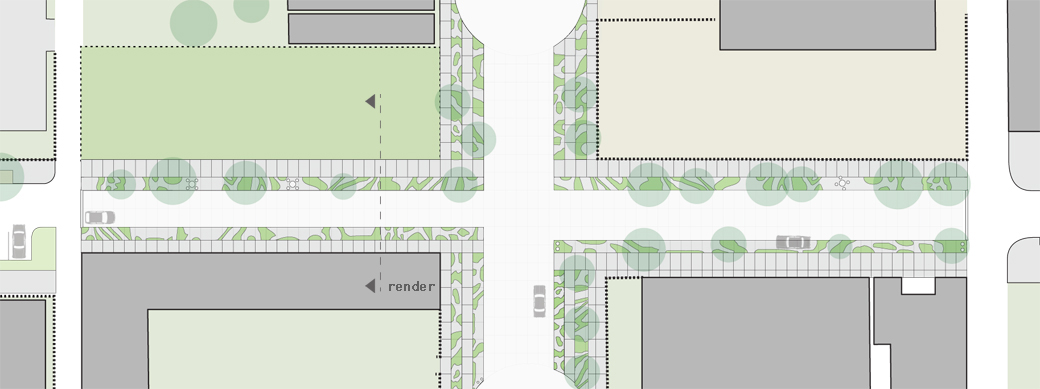
Opening up the streets for car traffic, removing all clutter, re-instating public accessibility
Urban renegeration
What to do with $1000,-, when you are asked to "repurpose" public space in a slumbering neighbourhood? How, above all, to achieve a lasting effect with so little means?
The goal of the Activate 2013 competition was to find attractive, low cost interventions that can renew public attention for a left-behind street or park. Common proposals for this kind of competitions include creative designs for benches, creative (re)use of furniture, or polished up playgrounds. We wanted to go beyond that, and search for a truly lasting intervention.

Existing site - blocked for traffic, crowded with objects
Strikingly, the site already features many (one could say, far too many), objects for sitting, playing, or relaxing. What is lacking, clearly, is people willing to use these features, and that is not so strange, for neither local traffic can pass through these streets, nor local residents can turn their eye to these places: cars are banned from the area, and fences are raised to seclude private property.
Drilling potholes
Our proposal acknowledges these issues, and tries to win them over by removing unnecessary borders and objects, and re-assign public grounds. How to do this? Gather a local crowd, spend the $1000,- on the rent for a jackhammer and buy some sidewalk chalk, and a few nice plants. Then follow our 5-step plan:

- Demolishing
- Drawing
- Drilling
- Sowing
- Dwelling
- Demolish
- Remove all unneccesary, sight-blocking fencing.
- Draw
- Ask local children to draw nice, inventive patterns on the concrete slabs.
- Drill
- Using your jackhammer, carve out the pattern on the concrete slabs, creating potholes.
- Sow
- Invite your neighbours to plant colourful, cheerful flowers in the potholes.
- Dwell
- What once was a cluttered, but underused pedestrian zone, now has become a street again, attracting different modes of through-traffic, but also providing an attractive intermediary zone, which simultaneously separates children from car traffic and stimulates people to slow down and stay.
The result of this simple, small intervention is a neighbourhood that is easily accessible, allows passers-by to pass through, retains the already existing public features, but invests them with new quality and vigour. All this is established in a joint effort of neighbours who share a common interest: to enliven their community.

Proposed site plan: opening up the streets for car traffic, removing all clutter, re-instating public accessibility.
